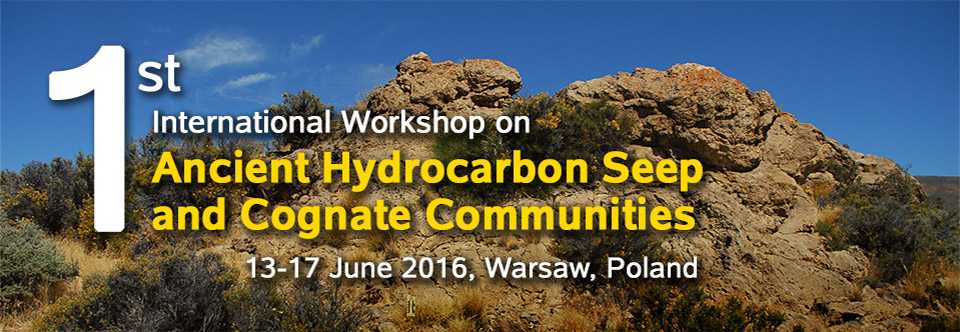
THE 3.25 BILLION-YEAR HISTORY OF CHEMOSYNTHETIC LIFE LIVING AT MARINE HYDROTHERMAL VENTS, METHANE SEEPS AND ORGANIC-FALLS
Crispin T.S. LITTLE
School of Earth and Environment, University of Leeds, Woodhouse Lane, Leeds LS2 9JT, UK.
Corresponding author: C.T.S.Little@earth.leeds.ac.uk
Over the past 40 years our understanding of the diversity of life in the deep sea has been revolutionized
by the discovery of dense communities of large animals living at chemosynthetic environments.
These communities can be found at hydrothermal vents, methane seeps and organic-falls (sunken
dead large marine animals and wood) where the energy source at the base of the ecosystem is
chemical (chemosynthetic), rather than coming from the sunlight falling on the upper layers of the
ocean (photosynthetic). These chemicals are reduced compounds, such as hydrogen sulfide and
methane, which can be oxidized microbial organisms to produce energy (chemosynthesis). Many
of the animals that dominate the biomass at modern chemosynthetic environments have symbiotic
relationships with these microbes (chemosymbiosis), and this allows these animals to grow very fast
and to large sizes, compared to their relatives in other marine environments. These animals include
bivalves, gastropods and tube worms. The communities of animals living at vents and seeps have
changed over the Phanerozoic eon, from brachiopod dominated communities in the Palaeozoic
and early Mesozoic eras to mollusc (bivalve and gastropod) dominated communities from the later
Mesozoic onwards. Some of the ecologically dominant animals with chemosymbionts are relative
newcomers to vent and seep environments and were preceded by other, now extinct, bivalves that
may (or may not) also have had symbionts. The oldest methane seeps in the geological record are
only from the latest Proterozoic eon, but older examples may well have existed, but have not yet
been found. Before the evolution of animals latest Proterozoic these seeps would have been inhabited
by microbial organisms. The same is true for ancient vent communities, but in contrast to seeps
there is direct evidence for hydrothermal activity on Earth all the way back to the early Archean eon
(3.5 billion years ago) and these have hosted microbial communities for at least 3.25 billion years.
Given this antiquity people have speculated that life itself may have started at hydrothermal vents
and that extraterrestrial life may exist in some solar system moons with subsurface oceans (e.g.,
Europa, Enceladus, Callisto, Ganymede). The modern animal communities living around sunken
dead whales and wood are similar to those at vents and seeps. Wood that can persist on the seafloor
long enough to support chemosynthetic communities is formed by the gymnosperm and angiosperm
green plants. Angiosperms evolved fairly recently in the Early Cretaceous period, whereas
gymnosperms have a record back to the Devonian period, around 380 million years ago. However,
ancient wood-fall communities that are similar to modern examples are only known from the Late
Cretaceous. Jurassic examples exist, but have a different community structure. Sunken dead whales
have supported chemosynthetic communities since the Eocene, not long after the whales evolved.
Before this similar communities existed around sunken marine reptile (e.g., plesiosaur) carcasses in
the Cretaceous oceans. Older chemosynthetic communities may have lived around sunken large
fish, for which have a fossil record at least to the Devonian, but have yet to be found.
